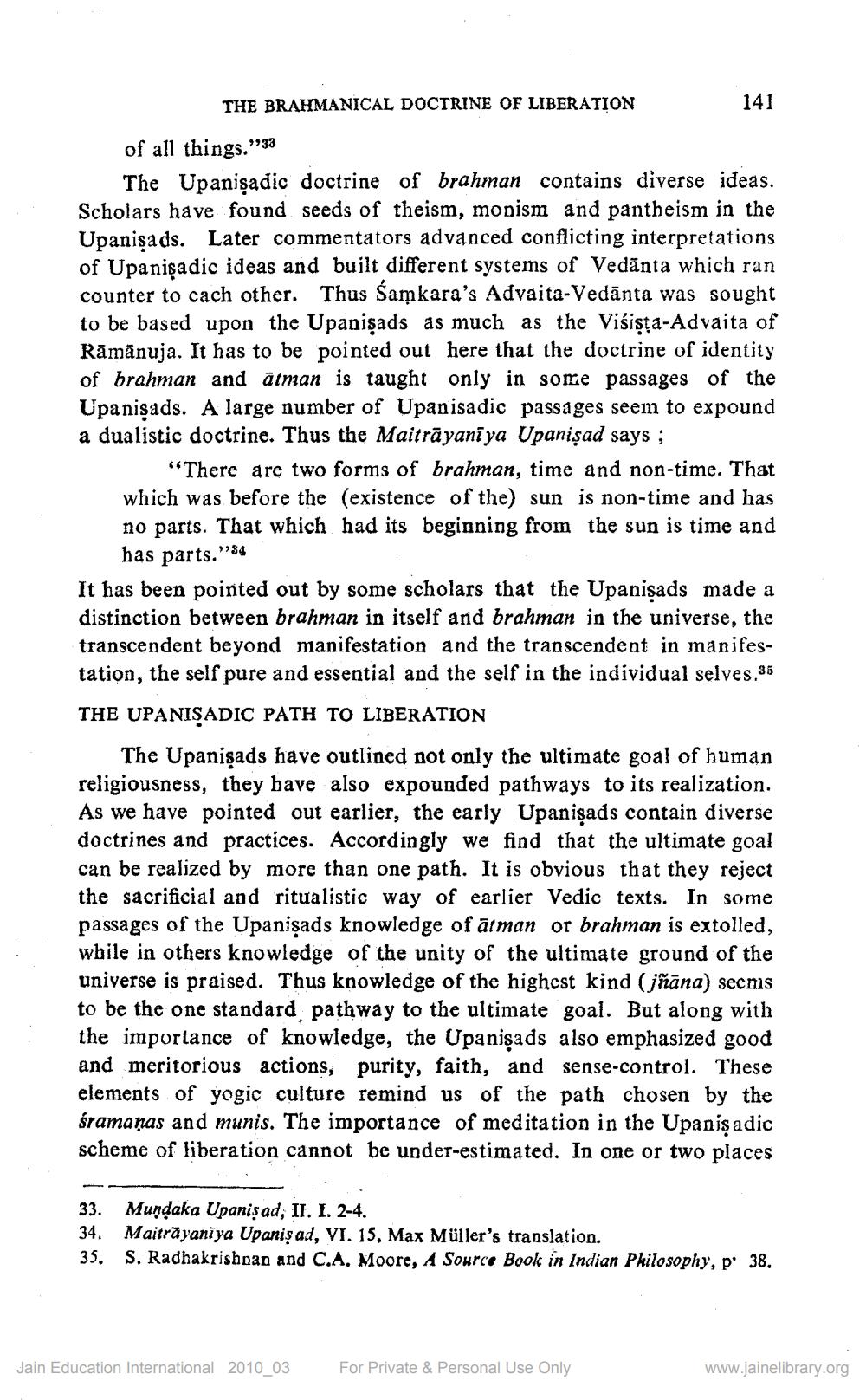________________
THE BRAHMANICAL DOCTRINE OF LIBERATION
141
of all things."33
The Upanisadic doctrine of brahman contains diverse ideas. Scholars have found seeds of theism, monism and pantheism in the Upanişads. Later commentators advanced conflicting interpretations of Upanişadic ideas and built different systems of Vedānta which ran counter to each other. Thus Šamkara's Advaita-Vedānta was sought to be based upon the Upanişads as much as the Visişta-Advaita of Rāmānuja. It has to be pointed out here that the doctrine of identity of brahman and ārman is taught only in some passages of the Upanisads. A large number of Upanisadic passages seem to expound a dualistic doctrine. Thus the Maitrāyanīya Upanişad says ;
"There are two forms of brahman, time and non-time. That which was before the (existence of the) sun is non-time and has no parts. That which had its beginning from the sun is time and
has parts."84 It has been pointed out by some scholars that the Upanişads made a distinction between brahman in itself and brahman in the universe, the transcendent beyond manifestation and the transcendent in manifestation, the self pure and essential and the self in the individual selves. 35 THE UPANISADIC PATH TO LIBERATION
The Upanişads have outlined not only the ultimate goal of human religiousness, they have also expounded pathways to its realization. As we have pointed out earlier, the early Upanişads contain diverse doctrines and practices. Accordingly we find that the ultimate goal can be realized by more than one path. It is obvious that they reject the sacrificial and ritualistic way of earlier Vedic texts. In some passages of the Upanişads knowledge of ātman or brahman is extolled, while in others knowledge of the unity of the ultimate ground of the universe is praised. Thus knowledge of the highest kind (jñāna) seenis to be the one standard pathway to the ultimate goal. But along with the importance of knowledge, the Upanişads also emphasized good and meritorious actions, purity, faith, and sense-control. These elements of yogic culture remind us of the path chosen by the śramaņas and munis. The importance of meditation in the Upanis adic scheme of liberation cannot be under-estimated. In one or two places
33. Mundaka Upaniş ad, II. I. 2-4. 34. Maitrāyanîya Upanis ad, VI. 15. Max Müller's translation. 35. S. Radhakrishnan and C.A. Moore, A Source Book in Indian Philosophy, p. 38.
Jain Education International 2010_03
For Private & Personal Use Only
www.jainelibrary.org




